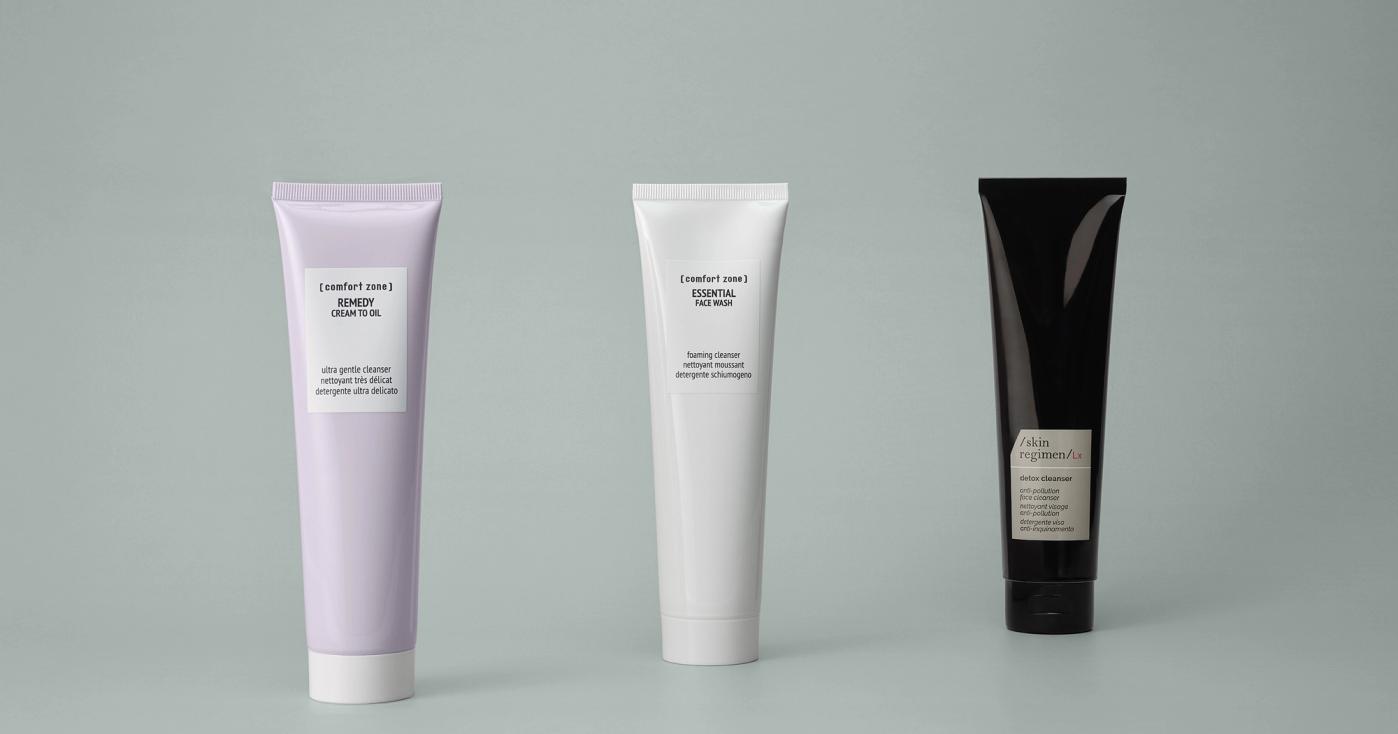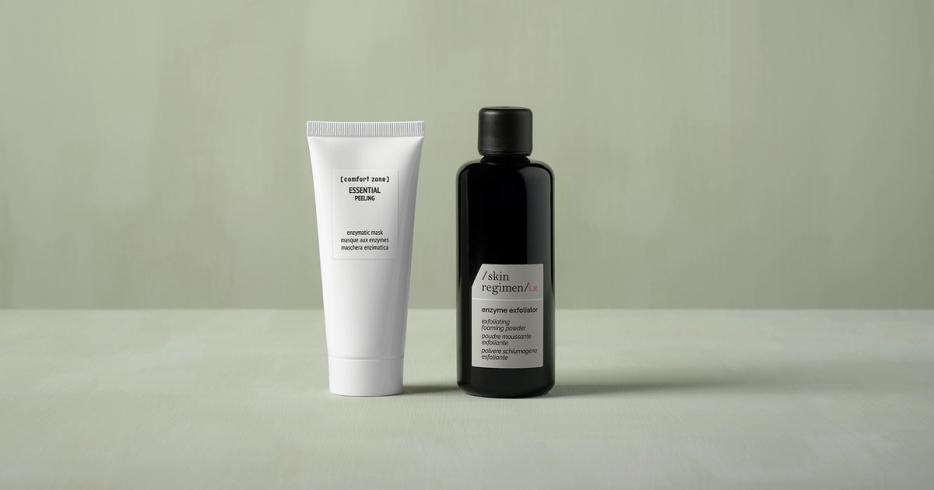Essential Peeling
Delicate enzymatic mask
skin care
Maria Giulia Simonazzi | International Training Manager
10 min read

Blackheads and sebaceous filaments are two very similar skin conditions that are often misdiagnosed, but they require different skincare and treatments. Both blackheads and sebaceous filaments appear as small blemishes on the skin. In most cases, they develop on the face, specifically around the nose, forehead, and chin. They look and feel very similar on the surface of the skin, but these two common skin health concerns are actually very different. They also require different skincare and treatments.
While they may share a similar appearance, blackheads and sebaceous filaments require different approaches. Understanding their differences is key to identifying which one you may have and determining effective skincare.
| blackheads | sebaceous filaments | |
| Blackheads (or open comedones) are dark, highly visible spots with a black cap at the surface, caused by the oxidation of sebum and dead cells when exposed to air. They form when pores become clogged with an accumulation of sebum, dead cells, and bacteria. This blockage not only prevents the normal flow of sebum to the skin's surface but also creates an environment where bacteria can proliferate. As sebum continues to be produced but cannot escape, it oxidizes and turns black, resulting in the characteristic black plug that makes blackheads so noticeable. Blackheads vary in size and depth, and are commonly associated with acneic skin, requiring specific treatment to prevent further inflammation and acne formation. | Sebaceous filaments are natural, light-colored structures within the pores that help regulate sebum flow and keep the skin hydrated. Composed mainly of sebum and dead skin cells, they appear as tiny gray or yellowish dots—especially on the nose and forehead—and are often mistaken for blackheads. Unlike acne, they are not a sign of clogged pores but part of the skin’s healthy sebum regulation system, forming a protective barrier against dryness and pollutants. While harmless and normal, gentle cleansing and exfoliation can reduce their visibility for a smoother, refined complexion. |
Sebaceous filaments and blackheads have many similarities: they mostly appear in the T-zone, they look like small, darkish blemishes, and, when squeezed, they produce matter. However, there are a few key differences that can help you tell them apart.
Both blackheads and sebaceous filaments can affect people of all ages, genders, and skin types and are often linked to hormonal changes and oily skin.
Sebaceous filaments aren’t harmful or contagious. They are an essential component of the skin's sebum regulation system. Sebum is essential for keeping the skin hydrated and creating a protective barrier against external elements like dirt and pollutants.
It’s a common misconception that blackheads are caused by dirty skin. The truth is these stubborn blemishes actually occur when the sebaceous glands produce too much sebum and it becomes trapped beneath the skin. This backed-up oil mixes with dead skin cells, bacteria, and other debris which clogs up the pore. The mixture that is exposed to the air at the pores opening oxidizes and turns black—forming the blackhead. Some factors that can cause blackheads to form include:
Sebaceous filaments instead, are a part of the skin’s structure and are something everyone has. They become more noticeable when the lining of the pore fills up with excess sebum instead of it moving to the skin's surface.
While sebaceous filaments are a natural part of the skin and cannot be completely eliminated, there are methods to minimize their appearance and maintain healthy skin. On the other hand, blackheads, which form due to clogged pores, can be treated and prevented with targeted techniques and specific products.
There are a few common treatments to avoid. While it may be satisfying, don’t squeeze or pop sebaceous filaments or blackheads. This can introduce bacteria into the pore, and irritate, damage, or even scar your skin. Popping blackheads often doesn't remove the entire clog, and may even push it deeper into the pore, and squeezed sebaceous filaments will refill in about a month. Pore strips may provide temporary results, but they're not a long-term solution. They can dry out the skin and open it up to acne-causing bacteria.

If over-the-counter products and a proper skincare routine are ineffective at minimizing sebaceous filaments or blackheads, it’s best to seek help from a professional. Some of the most common treatments a trained dermatologist or skincare professional can offer are:

Comfort Zone’s Active Pureness products are designed to combat excessive sebum production and reduce large pores and the appearance of localized imperfections caused by oily skin. Here's a selection of our offerings designed to address sebaceous filaments and blackheads:
Active Pureness Mask: Designed for oily skin, this clay face mask features Caolin and Green Clay for a mattifying and purifying effect. The creamy formula absorbs excess sebum, leaving skin more radiant and minimizing the appearance of pores.
Active Pureness Corrector: This targeted acne spot treatment specifically addresses blackheads. Its intensive purifying cosmetic treatment, formulated with Glycolic and Mandelic Acids, helps reduce the appearance of localized imperfections. The transparent formula is ideal for applying before makeup.
In conclusion, while blackheads and sebaceous filaments may appear similar, understanding the key differences between them is essential for effective skincare. Proper identification ensures that you’re using the right treatments and products to address each concern appropriately. Tailoring your skincare routine to these differences can lead to more targeted and successful results.
No, sebaceous filaments aren’t bad. They are a natural, normal part of your skin. While they may be visible, they aren’t harmful, don't contain bacteria, cause acne, and do not need to be removed.
Sebaceous filaments are common in people of all ages and skin types. However, they are most noticeable in people with oily skin or larger pores. Hormone fluctuations can also make them more prominent.
Sebaceous filaments are very common. They are a normal part of the skin structure found on everyone. It’s also very common to have noticeable sebaceous filaments.
You cannot eliminate sebaceous filaments because they are a natural part of your skin structure. You can, however, make them less noticeable with the right skincare routine.
Delicate enzymatic mask
Purifying clay mask
Exfoliating foaming powder